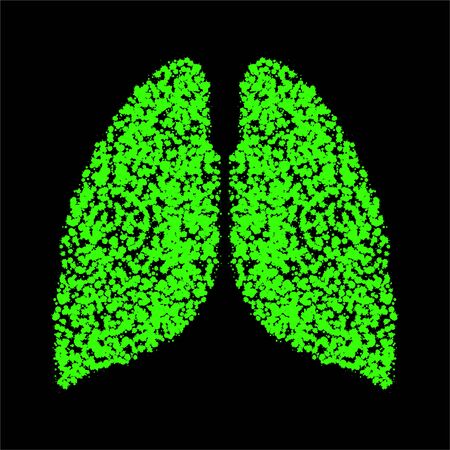Introduction to NHS Rehabilitation Referral Pathways
The National Health Service (NHS) is the cornerstone of healthcare across the United Kingdom, yet each of its four nations—England, Scotland, Wales, and Northern Ireland—operates distinct frameworks that govern access to rehabilitation services. Understanding these referral pathways is not only crucial for healthcare professionals but also for patients and carers seeking timely and appropriate support. Rehabilitation within the NHS encompasses a range of interventions aimed at optimising recovery and improving quality of life after injury, illness, or surgery. However, navigating the system can be complex due to regional differences in policy, service delivery models, and eligibility criteria.
Recognising how referrals are managed helps ensure individuals receive the right care at the right time. This knowledge bridges potential gaps in access, supports continuity of care, and enhances patient outcomes. By exploring each step of the referral process—from initial assessment through to specialist intervention—this guide provides a comprehensive overview tailored to the UK’s unique healthcare landscape. Whether you are a patient, family member, or healthcare provider, understanding these pathways will empower you to make informed decisions and advocate effectively for rehabilitation services across England, Scotland, Wales, and Northern Ireland.
2. Primary Care and Initial Assessment
In the context of NHS rehabilitation referrals across England, Scotland, Wales, and Northern Ireland, the journey typically begins in primary care. The General Practitioner (GP) functions as the principal gatekeeper within the NHS system, ensuring that patients receive appropriate and timely access to rehabilitation services. This role is fundamental not only for managing demand but also for safeguarding clinical quality and patient safety.
The Role of the GP as Gatekeeper
When a patient experiences a health issue that may require rehabilitation – such as following surgery, injury, or a long-term condition flare-up – their first port of call is usually their local GP surgery. GPs assess symptoms, undertake physical examinations if necessary, and consider medical history to determine whether specialist rehabilitation support is warranted. Only after this assessment will the GP initiate a formal referral to community or hospital-based rehabilitation teams.
Initial Steps for Patients Seeking Support
| Step | Description | Key Differences Across UK Nations |
|---|---|---|
| 1. Contact GP Surgery | Patient books an appointment with their GP or an advanced practitioner at their local surgery. | Universal; all nations require initial contact through primary care. |
| 2. Clinical Assessment | The GP conducts an assessment, which may include physical exams, reviewing notes, and discussing symptoms. | Assessment protocols are broadly similar but may reflect local clinical guidelines. |
| 3. Determining Need for Referral | If rehabilitation is indicated, the GP discusses options with the patient and agrees on next steps. | Some areas offer self-referral for specific therapies; generally, a GP referral remains standard. |
| 4. Initiating Referral Process | The GP completes a referral form or uses electronic systems to refer to local NHS rehabilitation services. | The systems used (e.g., SCI Gateway in Scotland or e-Referral Service in England) vary by nation. |
Key Points for Patients
NHS patients are not able to directly access most specialist rehabilitation services without this initial GP involvement. This approach helps prioritise those with the greatest clinical need while providing a coordinated care pathway tailored to each individual’s circumstances. In some cases—such as physiotherapy for musculoskeletal issues—self-referral schemes exist in certain regions of the UK, but these are exceptions rather than the rule.

3. Referral Process in England
Step-by-Step Guide to NHS Rehabilitation Referrals in England
The referral process for rehabilitation services within NHS England is structured to ensure timely and appropriate access to care. Here’s a detailed step-by-step guide that outlines how referrals are managed, from initial identification of need to commencement of rehabilitation interventions.
Step 1: Identification of Need
The journey typically begins when a patient’s need for rehabilitation is identified, often by their GP, hospital consultant, or other healthcare professional. This could follow an acute event (such as a stroke or injury), or relate to a long-term condition like neurological or musculoskeletal disorders.
Step 2: Assessment and Initial Consultation
Once the need is established, the referring clinician conducts an initial assessment to determine the most suitable type of rehabilitation—be it physical, occupational, speech and language therapy, or psychological support. They will consider factors such as severity, urgency, and local service availability.
Step 3: Making the Referral
The clinician then completes a referral form, either electronically through NHS e-Referral Service (e-RS) or using local systems where available. The form includes relevant medical history, current functional status, and specific rehabilitation goals.
Step 4: Triage and Allocation
Referrals are received by local rehabilitation teams—often based in community health trusts or specialist centres. These teams triage cases according to clinical priority and complexity. In some areas, multidisciplinary panels review referrals to match patients with appropriate services.
Step 5: Appointment Scheduling
Once accepted, patients are contacted directly by the service provider to arrange an initial appointment. Waiting times can vary regionally; urban centres may have shorter waits compared to rural areas due to differences in service capacity.
Step 6: Commencement of Rehabilitation Programme
The patient attends an initial assessment with the rehabilitation team who develop a personalised care plan. Interventions may take place in outpatient clinics, community settings, or at home depending on needs and local provision.
Regional Nuances Across England
While the core steps remain consistent across England, certain nuances exist between regions. For instance, access routes may differ slightly in London due to high service density, while rural areas might rely more on community-based teams and telehealth solutions. Integrated Care Systems (ICSs) also play a role in coordinating pathways at a local level to address population health needs and reduce unwarranted variation.
4. Devolved Differences: Scotland, Wales, and Northern Ireland
While the NHS operates across the United Kingdom, each devolved nation—Scotland, Wales, and Northern Ireland—administers its own healthcare system with distinct policies and procedures. Understanding these differences is essential when navigating rehabilitation referrals, as local priorities, funding structures, and service delivery can vary considerably.
Comparative Overview of Rehabilitation Referral Pathways
| Nation | Referral Process | Key Policies | Unique Features |
|---|---|---|---|
| Scotland | Referrals typically initiated via GPs or Allied Health Professionals; electronic referral systems are increasingly used. | AHP-led rehabilitation frameworks; strong focus on self-management and anticipatory care planning. | Emphasis on community-based services and integrated health & social care partnerships. |
| Wales | GPs remain primary referrers; some direct access for certain therapies; referral criteria set by local Health Boards. | NHS Wales Rehabilitation Framework; prioritises reducing waiting times and improving rural access. | Pioneering use of multidisciplinary triage teams to streamline referrals in some regions. |
| Northern Ireland | Referrals primarily through GPs; hospital consultants may refer for specialist rehab; managed by Health and Social Care Trusts. | Integrated model combining health and social care commissioning; focus on post-acute rehabilitation pathways. | Distinct cross-border arrangements for patients living near the Republic of Ireland. |
Policy Context and Local Priorities
The devolved governments set their own health strategies, which shape rehabilitation services:
- Scotland: The Scottish Government’s Framework for Supporting People through Recovery and Rehabilitation underlines early intervention and patient empowerment. Community Rehabilitation Teams (CRTs) are a hallmark, enabling more coordinated transitions from hospital to home.
- Wales: NHS Wales focuses on equitable access, particularly in rural communities. A national drive aims to reduce variation in referral criteria between different Health Boards, making navigation simpler for patients but still subject to local interpretation.
- Northern Ireland: The integration of health and social care facilitates smoother multi-agency referrals but also means that processes can differ significantly between Trust areas. There is an emphasis on cross-sector collaboration to support complex cases, especially following major trauma or neurological incidents.
Procedural Distinctions in Practice
In practice, the patient experience of obtaining a rehabilitation referral can differ due to local guidelines and resource allocation:
- Referral Criteria: Each nation maintains its own clinical thresholds for eligibility—what qualifies as ‘urgent’ or ‘routine’ may not be identical across borders.
- Waiting Times: Targets for first assessment or therapy input are set locally. For example, Wales has invested heavily in digital triage tools to manage demand in remote areas.
- Access Points: While GPs are central everywhere, Scotland and Wales have piloted schemes allowing direct self-referral for physiotherapy in some settings, a move less common in Northern Ireland.
Cultural Sensitivity and Patient Choice
Cultural context also shapes how patients interact with NHS services. In areas with significant Welsh- or Gaelic-speaking populations, language support is routinely available during rehabilitation assessments. Furthermore, devolved nations emphasise patient-centred care tailored to local needs, reflecting both statutory requirements and community expectations.Understanding these nuanced differences ensures that patients and professionals alike can navigate the NHS rehabilitation referral landscape effectively within each devolved nation.
5. What Happens After Referral: Assessment, Treatment, and Follow-Up
Initial Clinical Assessment
Once an NHS rehabilitation referral is received—whether in England, Scotland, Wales, or Northern Ireland—the process moves to a thorough clinical assessment stage. This assessment is typically conducted by a lead clinician such as a physiotherapist, occupational therapist, or another relevant healthcare professional. The focus here is to determine the patient’s specific needs, functional limitations, and rehabilitation goals. This stage often involves physical examinations, medical history reviews, and sometimes standardised assessment tools to objectively measure abilities and challenges.
Multidisciplinary Team Involvement
A hallmark of NHS rehabilitation across all four nations is the involvement of a multidisciplinary team (MDT). This team may include doctors, nurses, physiotherapists, occupational therapists, speech and language therapists, psychologists, and social workers. The MDT collaborates to develop an individualised care plan tailored to the patient’s needs. Each professional contributes their expertise—for instance, physiotherapists address mobility issues while occupational therapists focus on daily living skills. MDT meetings ensure that care remains coordinated and that progress towards rehabilitation goals is regularly reviewed.
Treatment Planning and Implementation
Following assessment and MDT discussion, a bespoke treatment plan is created. This plan outlines short- and long-term objectives as well as the interventions required to achieve them. Treatment may be provided in various settings: outpatient clinics, community centres, or even in the patient’s home depending on local service provision and individual circumstances. Interventions might include exercise programmes, assistive technology provision, education for self-management, or psychosocial support.
Ongoing Support and Follow-Up
After initial treatments begin, patients receive ongoing support which is crucial for sustained progress. Regular follow-up appointments allow the MDT to monitor improvement, adjust treatment plans as needed, and provide additional resources or referrals if further specialist input is required. In many cases, the transition from intensive rehabilitation to community-based services or voluntary sector support is carefully managed to ensure continuity of care. Patients are encouraged to engage with local support groups or charities where appropriate—organisations that are especially active within UK communities.
Patient-Centred Approach
The entire process after referral reflects the NHS’s commitment to patient-centred care across England, Scotland, Wales, and Northern Ireland. Patients and their families are kept informed at every stage and actively involved in decision-making about their treatment options. This collaborative ethos ensures that rehabilitation not only addresses clinical needs but also aligns with personal preferences and life goals.
6. Patient Experience and Expectations
Understanding the NHS Journey: Patient Interaction
Patients engaging with the NHS rehabilitation referral system across England, Scotland, Wales, and Northern Ireland encounter a process designed to be accessible and equitable, yet nuanced by local structures. Typically, the journey begins with an initial consultation—often with a GP or hospital specialist—who assesses the need for rehabilitation and initiates a referral if appropriate. Throughout this stage, patients are encouraged to communicate openly about their needs, preferences, and concerns.
Typical Wait Times and Regional Variations
One of the most common questions revolves around waiting times. In practice, waiting periods can vary significantly depending on region, service demand, and the urgency of the patient’s condition. In England, average waits for community-based physiotherapy might range from 2 to 8 weeks, while more specialised rehabilitation services could see longer delays. Scotland and Wales generally follow similar patterns but may offer shorter waits in less densely populated areas. Northern Ireland often experiences longer waits due to workforce constraints, particularly in rural locations.
What Patients Can Expect During the Process
Once referred, patients typically receive a confirmation letter detailing their appointment date and location. This communication may also provide information about what to bring or how to prepare. Initial assessments are usually thorough, involving both physical evaluations and discussions about personal goals. It is standard practice for NHS staff to involve patients in decision-making, ensuring care plans are tailored appropriately.
Ongoing Support and Communication
Throughout rehabilitation, patients can expect regular progress reviews and adjustments to their care plan as needed. The NHS places strong emphasis on continuity of care; however, patients should be proactive in reporting any changes or difficulties. Feedback mechanisms are available, allowing individuals to raise concerns or commend excellent service. Overall, while navigating the system can require patience—especially given wait times—the NHS strives to provide clear communication and inclusive support at every stage of the rehabilitation journey.
7. Useful Resources and Support Networks
Navigating the NHS rehabilitation referral process across England, Scotland, Wales, and Northern Ireland can be complex for both patients and their families. Fortunately, there are a variety of organisations, charities, and NHS-affiliated groups dedicated to providing guidance, information, and emotional support throughout each stage of the journey.
Key NHS Resources
The NHS website in each nation offers detailed information about local rehabilitation services, eligibility criteria, and referral pathways. For example:
- England: NHS.uk
- Scotland: NHS Inform Scotland
- Wales: NHS 111 Wales
- Northern Ireland: NI Direct Health and Wellbeing
Your local GP surgery or hospital discharge team can also provide printed leaflets and signposting to regional rehabilitation units.
Charities Specialising in Rehabilitation Support
Several UK-based charities offer tailored advice, advocacy services, and peer support for individuals undergoing rehabilitation:
- Headway – The brain injury association provides information on neurological rehabilitation and local support groups (headway.org.uk).
- The Stroke Association – Offers helplines, online communities, and recovery resources for stroke survivors and their carers (stroke.org.uk).
- British Red Cross – Delivers short-term mobility aid loans and home-from-hospital services across the UK (redcross.org.uk).
- Macmillan Cancer Support – Provides specialist rehabilitation support for cancer patients recovering post-treatment (macmillan.org.uk).
- MIND – Supports mental health needs which often accompany physical rehabilitation (mind.org.uk).
NHS-Supported Groups and Peer Networks
The NHS in all four nations encourages involvement with local patient support networks, which can include:
- Community Rehabilitation Teams (CRTs)
- PALS (Patient Advice and Liaison Services)
- SEN (Special Educational Needs) Parent Carer Forums
- User-led groups within hospital trusts or integrated care boards (ICBs)
Navigating Your Local Pathways: Where to Begin?
If you are unsure where to start, ask your GP or hospital social worker for a list of approved local support groups. Many areas also have voluntary sector coordinators embedded within the NHS who specialise in connecting patients to relevant services.
A Final Note on Advocacy and Self-Advocacy
Remember that seeking support—whether practical or emotional—is not only encouraged but often essential for a successful rehabilitation journey. By making use of these resources and networks, patients and families can better understand their choices, assert their needs during multidisciplinary meetings, and maintain hope during challenging times.

